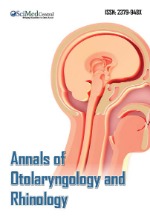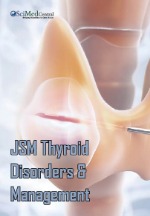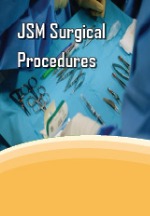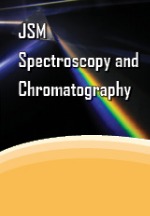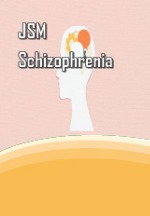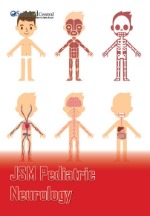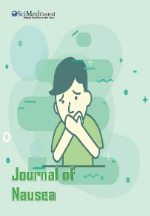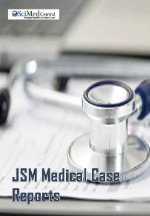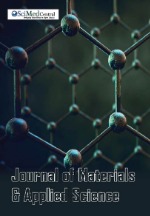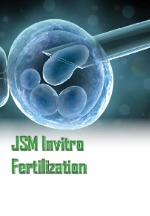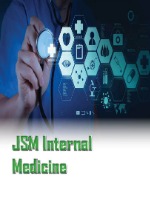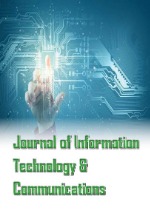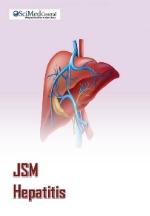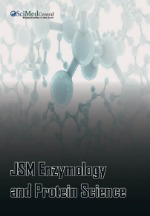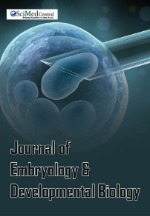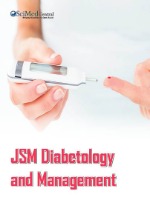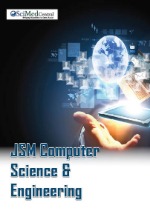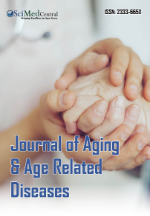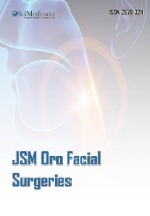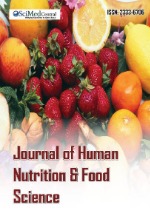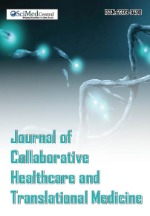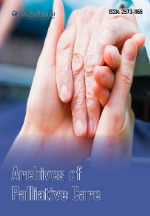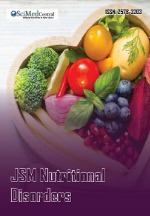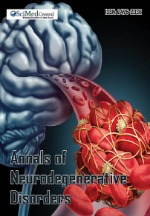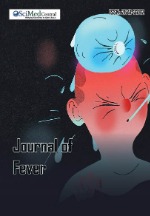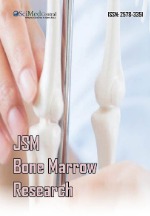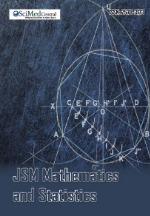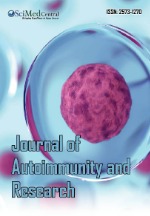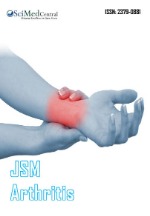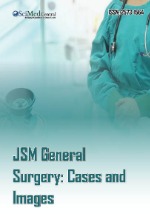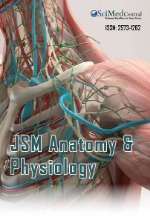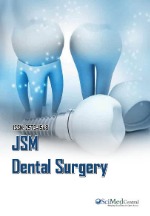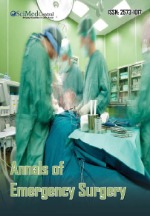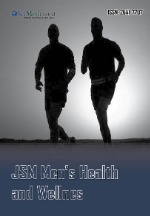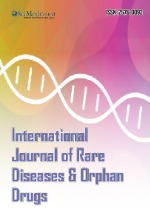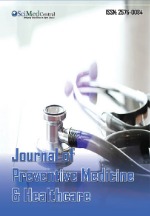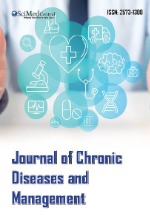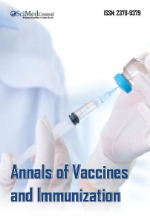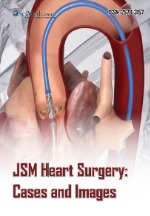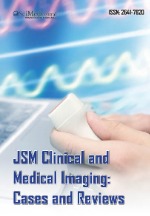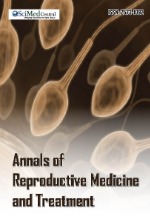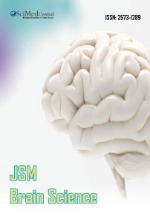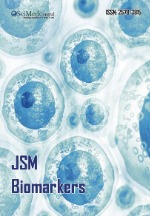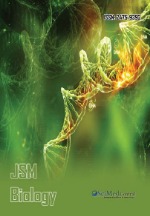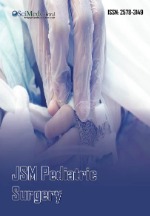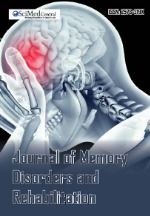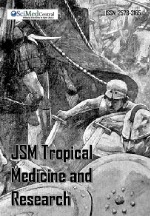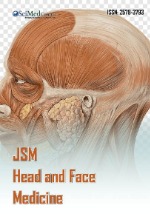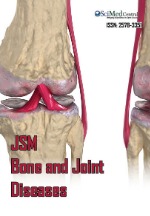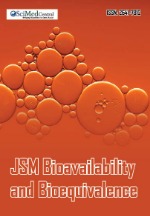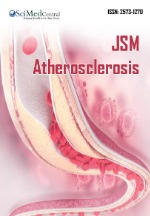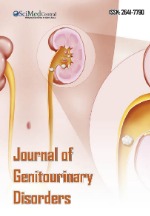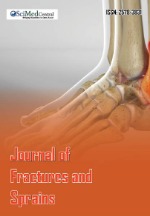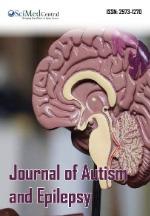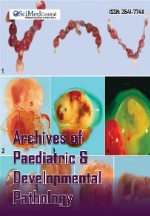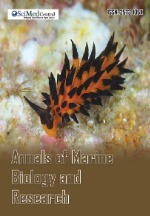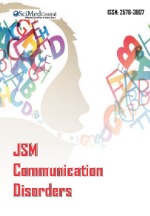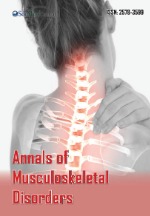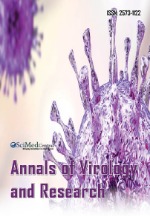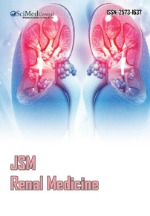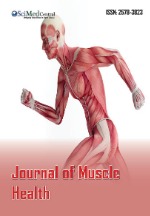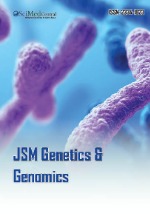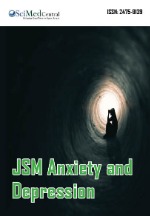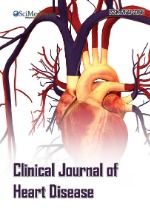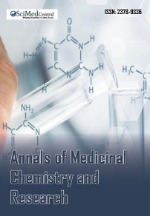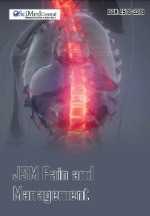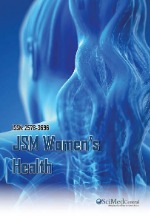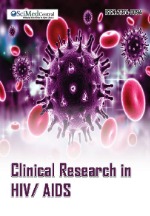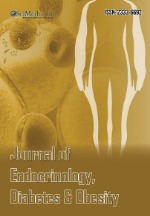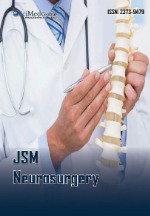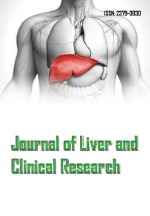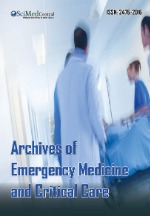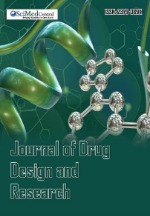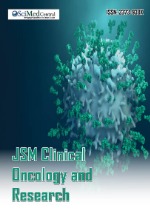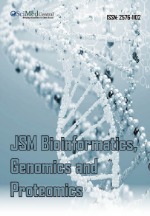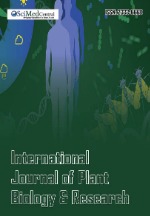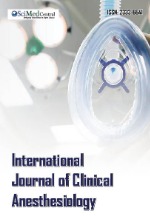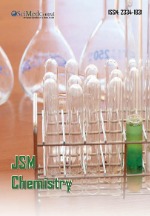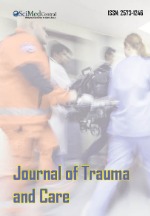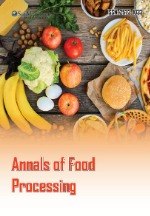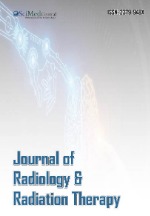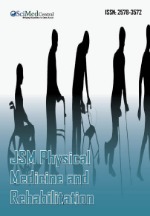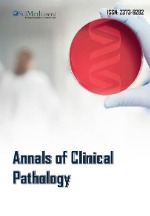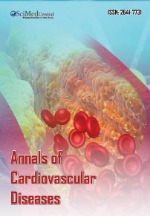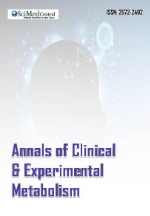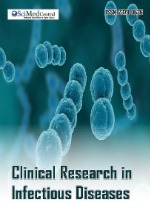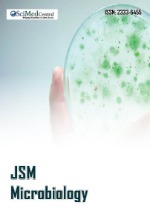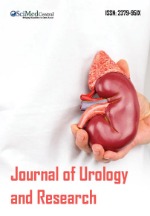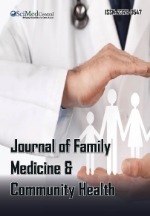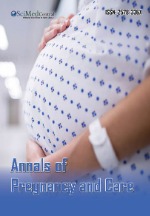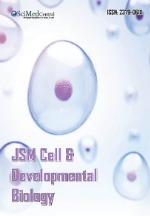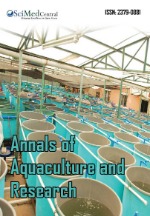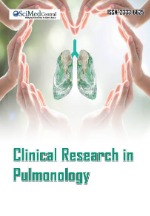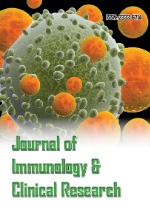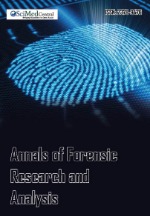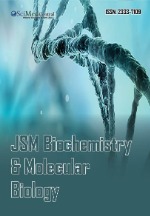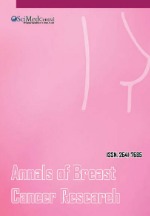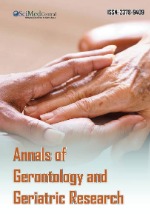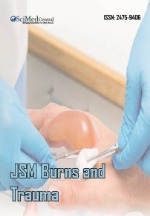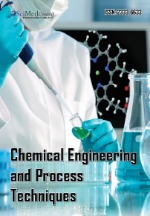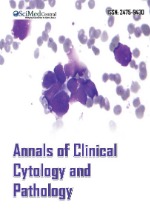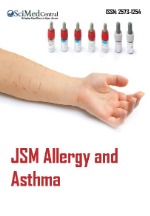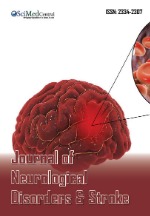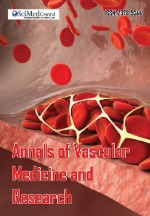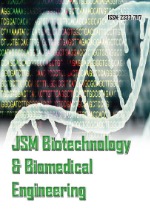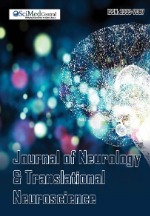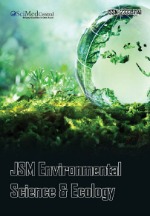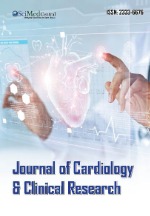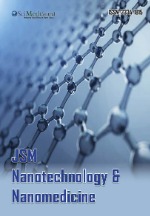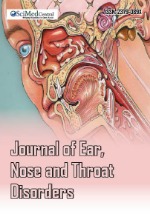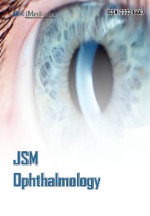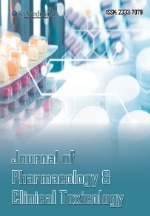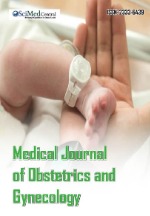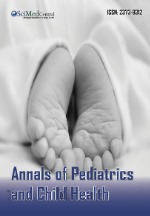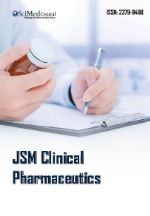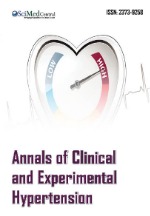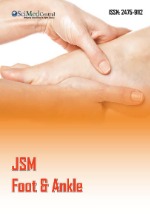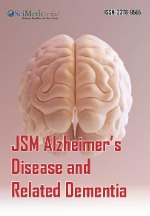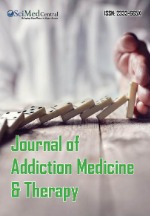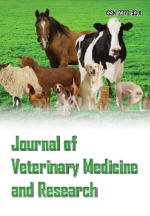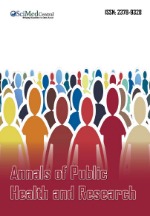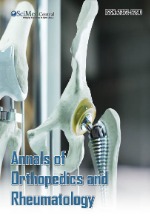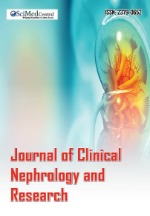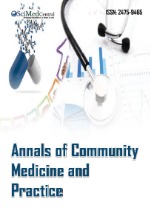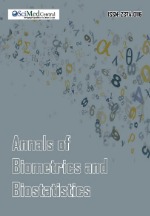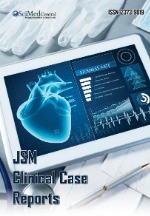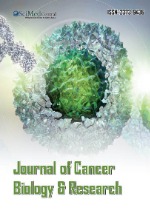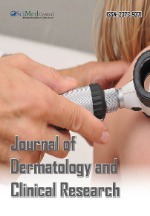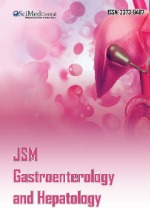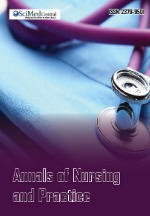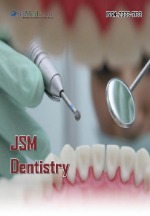Effect of Oral Iron Supplementation in Whole Blood Donors Deferred For Low Haemoglobin in Expansion of Safe Donor Pool
- 1. Government Medical College and Hospital, India
Abstract
Background and Objectives: Haemoglobin values of <125 g/L of haemoglobin in whole blood donors account for 15.5% to 55.8% deferrals which is easily treatable. If properly counselled and treated, Anaemic donors can broaden our shrinking voluntary blood donor base.
Material and methods: The prospective interventional study was conducted over 18 months in a tertiary care hospital. Blood donors presenting for whole blood donation but deferred for low haemoglobin (< 125g/L) were included. Whole blood donors showing a picture of iron deficiency based on complete blood counts (CBC) and peripheral blood film (PBF) on the sample collected before the initiation of oral iron supplementation (Day 0) were contacted and requested to visit the blood centre. They were counselled and provided ferrous sulphate tablets (325mg containing 100mg elemental iron) to be taken daily after meals for 60 days. Compliance with the intake of iron supplementation was ensured. After completing oral iron supplementation for 60 days, a repeat sample was collected.
Results: A significant increase in the mean haemoglobin (109 ± 15 to 126 ± 15 g/L; p value<0.001) and serum ferritin levels in all the donors taking iron supplements. The change in mean Hb after iron therapy was more pronounced in donors with higher pre-treatment mean Hb values. A significant increase in mean Hb concentration in males compared to females (140 ± 13 vs 123 ± 14 g/L; p <0.001) after iron therapy.
Conclusion: Oral iron supplementation showed a positive impact after 60 days.
Highlights
The first-of-a-kind study was done in a developing country where iron supplementation (325mg ferrous sulphate tablet containing 100mg elemental iron) was prescribed in first-time deferred blood donors and response after treatment was studied.
A significant increase in the mean haemoglobin (109 ± 15 to 126 ± 15 g/L; p value<0.001) and serum ferritin levels in all the donors taking iron supplements.
The change in mean haemoglobin after iron therapy was more pronounced in donors with higher pre-treatment mean haemoglobin values. A significant increase in mean haemoglobin concentration in males compared to females (140 ± 13 vs 123 ± 14 g/L; p <0.001) after iron therapy.
KEYWORD
- Iron deficiency anaemia
- Donor deferral
- Iron supplementation
CITATION
Garg A, Sood T, Kaur R, Mittal K, Kaur P, et al. (2024) Effect of Oral Iron Supplementation in Whole Blood Donors Deferred For Low Hae- moglobin in Expansion of Safe Donor Pool. J Hematol Transfus 11(2): 1123.
INTRODUCTION
Blood donors are the foundation of safe blood transfusion services. Every donor who is willing to donate is screened to ensure safe blood collection. A cut-off value of 125 g/L of haemoglobin is recommended before blood donation to make sure that the recipient receives adequate red cell mass. Using the selection criteria of haemoglobin as ≥125 g/L, low haemoglobin accounts for 15.5% to 55.8% deferrals [1,2]. Moreover, repeated blood donations can also lead to the development of iron deficiency anaemia in a previously healthy blood donor as there is a loss of approximately 225mg of iron with each blood donation of 450ml [3]. However, anaemia is a temporary cause of blood donor deferral and if such blood donors are counselled and treated for anaemia, an adequate supply of safe blood can be ascertained.
Iron supplementation to regular repeat blood donors has proved to play an important role in preventing the progressive decrease in haemoglobin and ferritin levels [3,4]. Despite improvements with iron supplementation, blood transfusion specialists are hesitant to treat blood donors because of insufficient time, out-of-domain service, inconsistent follow-up, noncompliance to oral iron therapy and financial constraints [5,6]. The present study was planned to determine the number of donors deferred due to low haemoglobin becoming eligible to donate whole blood after iron supplementation. We hypothesised that giving oral iron supplementation to blood donors deferred due to low haemoglobin can improve their haemoglobin levels. They can contribute to a safe donor pool and help us achieve the much-desired goal of 100% voluntary blood donation in developing countries.
MATERIAL AND METHODS
The prospective interventional study was conducted over 18 months in a tertiary care hospital after obtaining ethical clearance from the Institutional Ethics Committee. Blood donors presenting for whole blood donation either in outdoor blood donation camps or in the blood centre were screened as per criteria laid down by the national regulatory authority [7]. The standard operating procedure was followed to determine the pre-donation haemoglobin of whole blood donors using quality- checked copper sulphate solution. Whole blood donors deferred for low haemoglobin (< 125g/L) were assessed for inclusion in the present study. Only first-time donors or those who had not donated in the last year were included in the study. Regular blood donors (blood donors who had donated blood at least 3 times with the last donation in the previous year), blood donors suffering from any chronic disorder, peptic ulcer disease or inflammatory bowel disease and those taking iron supplements were excluded from the study. Written informed consent was obtained from the eligible blood donors enrolled in the study.
From each donor enrolled, two blood samples were collected, one in an ethylenediamine tetra acetic acid (EDTA) vial and the other in a plain vial. Samples were labelled and were given numerical study numbers followed by A. Sample A indicated sample before the initiation of oral iron supplementation (Day 0). EDTA sample was processed on the same day for complete blood counts (CBC) using a haematology cell counter (Beckman Coulter LH 780 system, California, United States). Peripheral blood film (PBF) was also prepared and stained using Leishman stain. Serum was separated from the plain sample vial using tabletop centrifuge (REMI, Mumbai, India) and stored in the cryovials at -400C deep freezer (REVCO, Thermo Fisher Scientific, Massachusetts, United States) for serum ferritin and other iron parameters. Blood donors with haemoglobin ≥125g/L on haematology cell counter or with peripheral blood film examination suggestive of a cause of anaemia other than iron deficiency were further excluded from the study.
Blood donors showing a picture of iron deficiency based on CBC and PBF were contacted and requested to visit the blood centre. They were counselled and provided with 30 tablets of ferrous sulphate (325mg containing 100mg elemental iron), to be taken once daily after meals. Blood donors were asked to preserve the empty tablet strip and bring back the same on day 30 and also to inform the investigator if they experienced any adverse effects due to iron supplementation. On day 10, the blood donors were contacted telephonically to ensure compliance and also to find out if they experienced any adverse effects of iron supplementation. On Day 30, the blood donors were again called to the blood centre and after ensuring compliance with the intake of previous iron supplementation, another 30 tablets were given. After successful completion of oral iron supplementation for 60 days (ensured by recovering the empty medicine strips), EDTA and plain samples were collected for performing CBC, PBF and iron profile. These were labelled and were given the same numerical study number as before iron supplementation but followed by B indicated sample after completion of iron supplementation. The blood donors were counselled to donate blood if there was an improvement in haematological parameters or else they were encouraged to visit a physician for further investigations.
Laboratory testing
Iron profile: Serum iron level, total iron binding capacity (TIBC), unsaturated iron binding capacity (UIBC), per cent saturation and serum ferritin levels were measured for each blood donor. Standard protein precipitation method (IRT1177D, Tulip Diagnostics (P) Ltd.) was used to measure serum iron and total iron binding capacity [8]. UIBC was calculated using the formula (TIBC in µg/dl – Iron in µg/dl). Serum ferritin level was measured by indirect ELISA method (ORGENTEC Diagnostika GmbH, Germany)
Outcome measures: The primary outcome was to determine the number of blood donors deferred due to low haemoglobin becoming eligible to donate blood after iron supplementation. The effect of oral iron supplementation on complete blood count and iron profile of blood donors deferred for low haemoglobin was also evaluated.
Sample size and statistical analysis: The sample size was estimated using the paired t-test formula. The sample size worked out to be 107 to which 20% was added considering the loss to follow-up, thus the total sample size came out to be 127. After rounding off, 150 donor samples were taken in the present study.
Categorical variableswerereportedascountsand percentages. Group comparisons were made with the Chi-Square test/Fisher’s Exact test. Continuous data were given as mean ± SD, range or median and interquartile range, as appropriate. The normality of quantitative data was checked through the Kolmogorov-Smirnov test of normality. For skewed data, comparisons of two groups were made by the Mann- Whitney test. For normally distributed data, the Student’s- test was applied to compare two groups. For real-time variables of skewed data, the Wilcoxon Signed rank test was applied while paired t-tests were carried out for normally distributed data. A p-value < 0.05 was considered significant. Analysis was conducted using IBM SPSS STATISTICS (version 22.0).
RESULTS
A total of 8737/35,232 (24.8%) blood donors were deferred during the study period. Of these 8737 deferred donors, 2534 (29%) blood donors were deferred because of Hb less than 125 g/L on finger stick capillary blood using the copper sulphate method. Five hundred and forty-four donors were excluded as they were regular blood donors, 1622 refused to participate in the study and 136 donors were already taking iron supplements. Two hundred and thirty-two were finally enrolled in the study. Of these 44 donors were further excluded (42 donors had Hb more than or equal to 125 g/L on retesting of venous sample on automated haematology analyser and 2 donors had high serum ferritin levels). The remaining 188 blood donors were finally enrolled and provided with oral iron supplementation. In 61 blood donors, iron supplementation could not be completed for 60 days because of adverse effects, non-compliance to iron supplementation or loss of follow-up. The remaining 127 donors were followed up till day 60 and their repeat samples (Sample B) were collected on day 60 (Figure 1).
Figure 1: Flow chart of study
Baseline profile of blood donors
The mean age of 127 blood donors who completed the study was 32.6 years. The majority of donors were females (81%; 103/127) and vegetarians (77.1%; 98/127). The mean Hb of the blood donors was 109 ± 15g/L, while the median serum ferritin was 12.8 ± 8.7ng/ml.
Effect of oral iron supplementation on haematological parameters and iron profile of blood donors
A significant increase in mean haemoglobin was observed in the blood donors who completed iron supplementation therapy for 60 days (109 ± 15 to 126 ± 15 g/L; p value<0.001). A significant change was observed for all the haematological parameters (RBC count, PCV, MCV, MCH, MCHC and RDW) after iron supplementation. No change was observed in reticulocyte percentage. A significant increase in the iron profile parameters of the donor was also noted (Table 1).
Table 1: Haematological parameters and iron profile of the 127 blood donors at day 0 and day 60
|
Donor sample (n=127) |
Sample A (Day 0) |
Sample B (Day 60) |
|
|
Haematological parameters |
|||
|
Parameter |
Mean ± SD# |
Mean ± SD |
p- value |
|
Haemoglobin (Hb)g/L |
109 ± 15 |
126 ± 15 |
<0.001** |
|
RBC count / 1012/L |
4.4 ± 0.6 |
4.6 ± 0.5 |
<0.001** |
|
PCV (%) |
33.1± 4.9 |
39.3 ± 4.3 |
<0.001** |
|
MCV (fl) |
79.6 ± 10.9 |
85.0 ± 8.3 |
<0.001** |
|
MCH (pg) |
25.0 ± 4.3 |
27.1 ± 3.2 |
<0.001** |
|
MCHC (g/L) |
312 ± 23 |
320 ± 11 |
<0.001** |
|
RDW (%) |
170 ± 26 |
158 ± 24 |
<0.001** |
|
Reticulocyte count (%) |
1.7 ± 0.6 |
1.7 ± 0.7 |
0.525 |
|
Iron profile |
|||
|
S. Ferritin (ng/ml) |
12.8 ± 8.7 |
23.4 ± 16.5 |
<0.001** |
|
TIBC (µg/dl) |
394 ± 87.8 |
333.9 ± 62.1 |
<0.001** |
|
UIBC (µg/dl) |
337.1 ± 90.7 |
262.7 ± 70.5 |
<0.001** |
|
Saturation (%) |
14.8 ± 8.0 |
22.4 ± 9.8 |
<0.001** |
|
S. Iron (µg/dl) |
56.0 ± 27.3 |
72.0 ± 30.7 |
<0.001** |
Wilcoxon Signed a rank test for skewed data
Paired t-test for normally distributed data
#all values in mean ± SD except Serum ferritin which is in median ± IQR
(*p value < 0.05 but > 0.01 is significant) (**p value < 0.01 is highly significant).
Of the 127 blood donors who completed iron supplementation for 60 days, 73 donors (57 %) became eligible to donate blood while in 54 donors (43%), the Hb levels did not rise above 125 g/L. The haematological parameters and iron profile of these 2 groups of blood donors along with the various statistical significances are described in Table 2.
Table 2: Haematological parameters and the iron profile of all the blood donors before and after 60 days of iron supplementation
|
|
Group 1 Blood donors eligible after iron supplementation (Hb>125g/L; n=73) |
Group 2 Blood donors not eligible after iron supplementation (Hb<125g/L; n=54) |
Statistical significance |
||||||
|
|
Day 0 |
Day 60 |
p |
Day 0 |
Day 60 |
P |
p# |
p ## |
p ### |
|
|
Mean ± SD |
Mean ± SD |
|
Mean ± SD |
Mean ± SD |
|
|
|
|
|
Haematological Parameters |
|||||||||
|
Haemoglobin (g/L) |
114± 10 |
138 ± 9 |
<0.001** |
99 ± 17 |
110 ± 9 |
<0.001** |
<0.001** |
<0.001** |
<0.001** |
|
RBC count/ 1012/L |
4.4± 0.62 |
4.8 ± 0.5 |
<0.001** |
4.4 ± 0.6 |
4.6 ± 0.5 |
0.011* |
0.045* |
0.972 |
0.180 |
|
PCV (%) |
36.1 ± 3.3 |
42.5 ± 2.7 |
<0.001** |
32.3 ± 4.6 |
35.2 ± 2.6 |
<0.001** |
<0.001** |
<0.001** |
<0.001** |
|
MCV (fl) |
82.4 ± 10.6 |
88.7 ± 6.2 |
<0.001** |
74.5 ± 9.9 |
79.4 ± 8.4 |
<0.001** |
.359 |
<0.001** |
<0.001** |
|
MCH (pg) |
26.0 ± 4.2 |
28.6± 2.2 |
<0.001** |
23.0 ± 3.9 |
24.9 ± 3.3 |
<0.001** |
.100 |
<0.001** |
<0.001** |
|
MCHC (g/L) |
314 ± 22 |
322 ± 7 |
<0.001** |
306 ± 22 |
310 ± 17 |
0.203 |
.096 |
0.029* |
<0.001** |
|
RDW (%) |
16.7± 2.6 |
15± 1.6 |
<0.001** |
17.8 ± 2.5 |
17.1 ± 2.7 |
0.043* |
.065 |
0.004** |
<0.001** |
|
Reticulocyte count (%) |
1.6±0.7 |
1.7±0.6 |
0.237 |
1.8 ± 1.0 |
1.7 ± 0.8 |
0.858 |
0.618 |
0.580 |
0.714 |
|
Iron Profile |
|||||||||
|
S. Ferritin (ng/ml) |
12.4± 7.4 |
23.9± 14.8 |
<0.001** |
12.4 ± 6.6 |
22.4 ± 7.9 |
<0.001** |
0.122 |
0.314 |
0.022* |
|
S. Iron (µg/dl) |
55.3± 27.7 |
77.6 ± 27.5 |
<0.001** |
55.4 ± 27.2 |
61.3 ± 32.82 |
0.228 |
0.034* |
0.890 |
0.018* |
|
TIBC (µg/dl) |
397.6 ± 83.3 |
325.6 ± 63.5 |
<0.001** |
407.8 ± 95.7 |
346.1 ± 54.8 |
<0.001** |
0.559 |
0.788 |
0.143 |
|
UIBC (µg/dl) |
342 ± 85.9 |
248.5 ± 65.7 |
<0.001** |
350.5 ± 102.6 |
282.8 ± 72.1 |
<0.001** |
0.190 |
0.943 |
0.038* |
|
% Saturation |
14.4 ± 8.0 |
24.0± 9.3 |
<0.001** |
14.3 ± 8.4 |
19.2 ± 10.3 |
0.004** |
0.082 |
0.935 |
0.018* |
p Statistical significance of improvement in haematological parameters and iron profile after iron supplementation in each group
p # Statistical significance of change (day 60-day 0) in haematological parameters and iron profile after iron supplementation between the 2 groups p ## Statistical significance of baseline haematological parameters and iron profile before iron supplementation between the 2 groups
p ### Statistical significance of haematological parameters and iron profile after iron supplementation between the 2 groups
Wilcoxon Signed a rank test for skewed data; Paired t-test for normally distributed data; (*p- value < .05 but > .01 is significant); (**p- value < .01 is highly significant)
The baseline mean Hb, PCV and RBC indices values before iron supplementation were statistically lower in donors of group 2. The change in haematological parameters and improvement in mean Hb, RBC count, PCV and serum iron levels was significantly greater in donors of group 1. Comparing the effect of iron supplementation in the two groups after 60 days, the Hb, PCV, RBC indices and iron profile were significantly higher in group 1 donors.
Nine out of 73 donors who became eligible to donate blood came forward and donated whole blood at our blood centre. In 47% (35/73) of the donors in whom the Hb rose to > 125 g/dl, the serum ferritin values were still below the lower reference range of our laboratory (males >34 ng/ml; females >22 ng/ml). Sixty per cent (21/35) of these were female donors and 40% (14/35) were male donors.
Gender comparison
Out of 127 donors who received and completed iron supplementation for 60 days, 103 (81%) were female and 24 (19%) were male donors. Hb rose to more than 125g/L in 51% (53/103) of female donors and 83% (20/24) of male donors.
There was a significant increase in mean Hb concentration and RBC indices (MCV, MCH, MCHC) in males as compared to females after iron supplementation (140 ± 13 vs 123 ± 14 g/L; p <0.001) but the levels of serum ferritin were comparable (25.3 ± 21.9 vs 22.8 ± 21.7 ng/ml) in both males and females (Table 3).
Table 3: Haematological parameters and the iron profile of male and female donors after iron supplementation on day 60
|
Donors (n=127) |
Males(n=24) (Day 60) |
Females(n=103) (Day 60) |
|
|
Parameter |
Mean ± SD |
Mean ± SD |
p value |
|
Haematological Parameters |
|||
|
Haemoglobin (Hb) |
140 ± 13 |
123 ± 14 |
<0.001** |
|
RBC count (106/µL) |
5.1 ± 0.5 |
4.6 ± 0.5 |
0.344 |
|
PCV (%) |
43.3 ± 3.4 |
38.4 ± 4.1 |
0.002** |
|
MCV (femtolitre) |
85.5 ± 8.6 |
84.9 ± 8.3 |
<0.001** |
|
MCH (picogram) |
27.5 ± 3.0 |
27.1 ± 3.2 |
0.001** |
|
MCHC (g/dl) |
32.0 ± 0.8 |
31.9 ± 1.1 |
0.025* |
|
RDW (%) |
15.8 ± 2.2 |
15.9 ± 2.5 |
0.084 |
|
Reticulocyte count |
1.6 ± 0.6 |
1.8 ± 0.7 |
0.992 |
|
Iron profile |
|||
|
S. Ferritin (ng/ml) |
25.3 ± 21.9 |
22.8 ± 21.7 |
0.171 |
|
TIBC (µg/dl) |
325.7 ± 50.7 |
335 ± 64.7 |
0.434 |
|
UIBC (µg/dl) |
250.7 ± 65.0 |
264 ± 72.1 |
0.310 |
|
Saturation (%) |
23.1 ± 10.5 |
22.1 ± 9.0 |
0.911 |
|
S. Iron (µg/dl) |
72.5 ± 26.4 |
72.0 ± 30.5 |
0.927 |
(*p value < .05 but > .01 is significant) (**p value < .01 is highly significant)
The change in the haematological parameters and iron profile of male and female donors before and after iron supplementation are described in Table 4.
Table 4: Haematological parameters and the iron profile of male and female donors before and after iron supplementation
|
Donor sample |
Sample A Males (Day 0) |
Sample B Males (Day 60) |
|
Sample A Females (Day 0) |
Sample B Females (Day 60) |
|
p value |
|
Haematological parameters |
|||||||
|
Parameter |
Mean ± SD |
Mean ± SD |
? change (Males) |
Mean ± SD |
Mean ± SD |
? change (Females) |
p value# |
|
Haemoglobin (Hb) |
111 ± 10 |
140 ± 13 |
29± 03 |
108 ± 15 |
123 ± 14 |
15± 01 |
<0.001** |
|
RBC count (106/µL) |
5.0 ± 0.8 |
5.1 ± 0.5 |
0.1± 0.3 |
4.3 ± 0.5 |
4.6 ± 0.5 |
0.3± 0 |
0.305 |
|
PCV (%) |
36.4 ± 3.4 |
43.3 ± 3.4 |
6.9± 0 |
34.4 ± 4.2 |
38.4 ± 4.1 |
4± 0.1 |
0.002 |
|
MCV (femtolitre) |
74.4 ± 12.8 |
85.5 ± 8.6 |
11.1 ± 4.2 |
80.8 ± 10.0 |
84.9 ± 8.3 |
4.1± 1.7 |
<0.001** |
|
MCH (picogram) |
23.1 ± 4.8 |
27.5 ± 3.0 |
4.4± 1.8 |
25.4 ± 4.0 |
27.1 ± 3.2 |
1.7± 0.8 |
0.001** |
|
MCHC (g/dl) |
31.0 ± 1.3 |
32.0 ± 0.8 |
1± 0.5 |
31.2 ± 2.4 |
31.9 ± 1.1 |
0.7 ± 1.3 |
0.020 |
|
RDW (%) |
17.8 ± 2.0 |
15.8 ± 2.2 |
2± 0.2 |
16.9 ± 2.7 |
15.9 ± 2.5 |
1.0 ± 0.2 |
0.075 |
|
Reticulocyte count |
1.6 ± 0.6 |
1.6 ± 0.6 |
nil |
1.8 ± 0.9 |
1.8 ± 0.7 |
0 ± 0.2 |
0.994 |
|
Iron profile |
|||||||
|
S. Ferritin (ng/ml) |
13.6 ± 26.0 |
25.3 ± 21.9 |
11.7± 4.1 |
12.6 ± 16.8 |
22.8 ± 21.7 |
10.2± 4.9 |
0.171 |
|
TIBC (µg/dl) |
403.7 ± 99.1 |
325.7 ± 50.7 |
78±48.4 |
391.7 ± 85.4 |
335 ± 64.7 |
56± 20.7 |
0.434 |
|
UIBC (µg/dl) |
348 ± 111 |
250.7 ± 65.0 |
98± 46 |
334.6± 85.7 |
264 ± 72.1 |
70± 13.6 |
0.311 |
|
Saturation (%) |
15.0 ± 10.7 |
23.1 ± 10.5 |
8± 0.2 |
14.7 ± 7.4 |
22.1 ± 9.0 |
7.4± 1.6 |
0.901 |
|
S. Iron (µg/dl) |
55.6 ± 32.5 |
72.5 ± 26.4 |
16.4± 6.1 |
56.1 ± 26.2 |
72.0 ± 30.5 |
15.9± 4.3 |
0.928 |
(*p value < 0.05 but >0 .01 is significant) (**p value < 0.01 is highly significant)
Non-adherence to oral iron supplementation
Sixty-one blood donors did not complete their 60-day oral iron supplementation. The major reason for non-adherence was iron supplementation-related adverse effects in 61% of the donors (n=37). The majority (97%, n=34) of donors complained of gastrointestinal complaints. Figure 2 shows the details of the adverse effects experienced by the donors.
Figure 2: Adverse effects of iron supplementation in blood donors.
DISCUSSION
In the present study, iron supplementation was provided to blood donors deferred due to low haemoglobin. In our study, 64% (1622/2534) of blood donors did not give their consent to participate. Similarly, in a prospective randomized control trial on female whole blood donors, 27% (404/1287) declined to participate [9]. It was observed that the majority of the donors considered themselves healthy and they did not feel the requirement to take any medication. Another reason for non-participation was that our department conducts outdoor voluntary blood donation camps in a radius of 200 km of the main city and the blood donors belonging to distant areas showed their inability to travel to our blood centre for follow-up. If these deferred blood donors are properly counselled and guided to visit the nearest block hospital or primary health centres, such donors can be recruited to the national donor pool.
In our study, oral iron supplementation (ferrous sulphate containing 100 mg elemental iron) was given for 60 days and a positive impact of oral iron supplementation was observed. This was similar to other studies across the globe [10-13]. There was a significant rise in the mean haemoglobin levels of the donors after iron supplementation in our study. In a study iron supplementation prompt increase in haemoglobin concentration was observed in both male and female donors (122.7 ± 0.6 g /L, 120.1±0.5 g/L to 129.7±3.2 g/L, 138.5±2.2g/L) [13]. A similar increase in mean haemoglobin levels has been shown in a study from India [11]. Serum ferritin is a sensitive and earlier indicator than haemoglobin to assess the iron stores in the body [14]. In our study, there was a significant increase in mean serum ferritin levels to 10.2 ng/ml (p< 0.001) after iron supplementation for 60 days. In a pilot iron substitution programme in female blood donors with iron deficiency without anaemia, a significant increase in serum ferritin levels (from a mean value of 7.12 to 25.2 ng⁄ ml) was observed [10]. Similarly, in a study by Waldvogel and colleagues to evaluate the treatment efficacy of iron supplementation among non-anemic iron-deficient female blood donors a net increase of 14.8 ng/mL (p < 0.01) in mean serum ferritin levels was noted [12]. However, in our study no change in the reticulocyte count was seen on day 0 and day 60 which can be explained that the reticulocytes attain a maximal value on the fifth to tenth day after institution of therapy and thereafter gradually return to normal [15]. In a study it was seen that the primary reticulocyte response occurs after whole blood donation, the peak and period of which is higher in donors taking iron supplements. In addition, a physiological secondary reticulocyte response is seen around 100 days after whole blood donation [16]. More evidence-based studies are required for the evaluation of dosage, duration and different formulations of iron supplementation in whole blood donors.
Following completion of the iron supplementation for 60 days, in 54/127(43%) of the donors although the mean haemoglobin levels rose by 11g/L but were still less than 125g/L and they were not eligible for whole blood donation. Their baseline haemoglobin was significantly lower than those donors whose haemoglobin rose to more than 125g/L after iron supplementation (73/127; 57%). Statistically significant improvement in the serum ferritin levels was seen in both groups of donors (who became eligible and remained ineligible) after treatment with oral iron supplementation though there was no difference in the baseline serum ferritin levels between the two groups. In a study to identify the benefit of iron supplementation, its nature and the time course for recovery from blood donation, the authors concluded that the effect of oral iron on storage and RBC recovery was minimal in donors with baseline ferritin >50ng/ml, but considerable when ferritin was <50 ng/ml. When serum ferritin is >12 ng/ml, the iron absorbed goes mostly to the RBCs while when values are <12 ng/ml it is distributed to both RBC and storage iron pools [17].
Out of 73 blood donors whose haemoglobin rose to more than 125g/L after iron supplementation, 35 (47%) still had serum ferritin values below the lower reference range. Haemoglobin values do not necessarily reflect iron stores and measurement of haemoglobin alone is insufficient for detecting blood donors with iron deficiency without anaemia (IDWA). At our centre volume of whole blood collected from the donor depends on the donor’s weight (45–60 kg:350 ml and >60 kg: 450 ml). For each unit of blood collected (350/450 ml), a donor loses about 175/225 mg of iron, while 500 ml blood donation in men and women would account for a loss of approximately 25% and 75% of iron stores respectively [11,18]. Such donors should not donate blood and need prolonged iron supplementation to correct their anaemia and also replenish their iron stores.
In our study, 81% (103/127) of the donors deferred for anaemia were females and a sizable 19% (24/127) of the anaemic donors were males. A study from India observed high deferral rates (34.2 %) in women blood donors as compared to men (1.2 %) because of anaemia [2]. However, after iron supplementation, 83% (20/24) of male blood donors but only 51% (53/103) of female blood donors were eligible for blood donation. The iron requirement in women is on average 50% higher than in men because of ongoing menstrual blood loss with each cycle [10].Thus, female blood donors require prolonged iron supplementation to combat physiological blood loss.
Of seventy-three donors who became eligible for blood donation, only 9/73 (12%) donors came forward and donated whole blood in voluntary blood donation camps. However, we were not able to recruit 88% (64/73) of blood donors to our donor pool. Any blood donor once deferred gets demotivated due to bad experiences and the chances of their return become highly unlikely. Blood donors deferred due to low haemoglobin believe deferral a social exclusion and refrain from future donation attempts [19]. Moreover, they were probably hesitant to donate blood as they feared becoming anaemic after blood donation.
Compliance with oral iron supplementation was present in 65% (127/188) of the participants during both visits. Iron supplementation causes gastrointestinal symptoms. In our study, 37/188 (20%) experienced adverse effects related to iron supplements. Adverse effects to iron supplementation reported in the literature range from 16% to 78% [9,10,12,20-24]. Tolerance for other iron formulations like ferrous gluconate was reported to be better than ferrous sulphate (9% vs 21%) [24]. However, in our study, we were not able to switch iron supplements due to the non-availability of other salts.
Although our study was not designed to assess the appropriateness of the copper sulphate method, it was observed that in 19% (44/232) of deferred blood donors, haemoglobin levels turned out to be more than 12.5 g/L when their venous blood samples were retested on automated haematology analyzer and had resulted in high false deferral rates. This emphasizes the need for the use of more sensitive and robust methods of Hb estimation in blood donors for screening.
Our study emphasizes the potential of increasing the donor pool base by giving iron supplementation to donors who are deferred temporarily based on anaemia. The beneficial effect of iron supplementation in regular voluntary blood donors is well established but with the increasing global demand for blood and the shrinking size of the blood donor base, the potential of enhancing the donor base by treating deferred donors due to anaemia cannot be undermined. A well-structured strategy to give iron supplementation should be made a part of the voluntary blood donation programme. Major limitations are the availability of resources with the blood centres, the cost for implementation of specific interventions which includes screening, testing and providing iron supplementation, the perception of the donor of a transfusion specialist as a blood collection officer only, convincing the donor to take iron supplementation and the adverse effects of iron supplementation. Creating donor awareness about anaemia is also the need of the hour.
ACKNOWLEDGEMENTS
A.P., R.K. and T.S. were involved in the planning of the study, data collection, data acquisition, data analysis and manuscript development; K.M., P.K. and G.K. reviewed the manuscript.
REFERENCES
- Agnihotri N. Whole blood donor deferral analysis at a centre in Western India. Asian J Transfus Sci. 2010; 4: 116-122.
- Bahadur S, Pujani M, Jain M. Donor deferral due to anaemia: A tertiary care centre-based study. Asian J Transfus Sci. 2011; 5: 53-55.
- Boulton F. Managing donors and iron deficiency. Vox Sang. 2004; 87:22-24.
- Davery RJ. Recruiting blood donors: challenges and opportunities. Transfusion. 2004; 44: 597-600.
- Bianco C, Brittenham G, Gitcher RO, Gordeuk VR, Kushner JP, Sayers M, et al. Maintaining iron balance in women blood donors of childbearing age: summary of a workshop. Transfusion. 2002; 42:798-805
- Simon TL. Iron, iron everywhere but not enough to donate. Transfusion. 2002; 42: 664-665.
- Donors selection and blood collection. In: Saran RK, editor. Transfusion medicine technical manual. 2nd ed. New Delhi: Director General of Health Services, Ministry of Health and Family Welfare, Government of India. 2003; 7-20.
- Worwood M, May AM, Bain BJ. Iron deficiency anaemia and iron overload. In: Bain BJ, Bates I, Laffan MA. Dacie and lewis practical haematology. 12th ed. China. Elsevier. 2017; 165-186.
- Marks D, Speedy J, Robinson K. An 8-week course of 45mg of carbonyl iron daily reduces iron deficiency in female whole blood donors aged 18 to 45 years: results of a prospective randomised controlled trial. Transfusion. 2014; 54: 780-788.
- Pittori C, Buser A, Gasser UE. A pilot Iron Substitution Programme in female blood donors with iron deficiency without anaemia. Vox Sang. 2011; 100: 303-311.
- Dara R, Marwaha N, Khetan D, Patidar G. A randomized control study to evaluate effects of short-term oral iron supplementation in regular voluntary blood donors. Indian J Hematol Blood Transfus. 2016; 32: 299-306.
- Waldvogel S, Pedrazzini B, Vaucher P, Bize R, Cornuz J, Tissot JD et at. Clinical evaluation of iron treatment efficiency among non-anaemic but iron-deficient female blood donors: a randomised controlled trial. BMC Med. 2012; 10: 2.
- Alvarez-Ossorio L, Kirchner H, Kluter H, Schlenke P. Low ferritin levels indicate the need for iron supplementation: a strategy to minimize iron-depletion in regular blood donors. Transfus Med. 2000; 10: 107-112.
- Agarwal KN, Agarwal DK, Sharma A, Sharma K, Prasad K, Kalita MC, et al. Prevalence of anaemia in pregnant & lactating women in India. Indian J MedRes. 2006; 124: 173-184.
- Goodnough L, Nemeth E. Iron deficiency and related disorders. Greer J, Arber D, Glader B, List A, Means R, Paraskevas F. Wintrobe’s clinical haematology. 13th ed. China. Lippincott Williams and Wilkins. 2014; 617-640.
- Mast AE, Szabo A, Stone M, Cable RG, Spencer BR, Kiss JE. NHLBI Recipient Epidemiology Donor Evaluation Study (REDS)-III. The benefits of iron supplementation following blood donation vary with baseline iron status. Am J Hematol. 2020; 784-791.
- Mantadakis E, Panagopoulou P, Kontekaki E, Bezirgiannidou Z, Martinis G. Iron Deficiency and Blood Donation: Links, Risks and Management. J Blood Med. 2022; 13: 775-786.
- Eder A, Kiss J. Adverse reactions and iron deficiency after blood donation. In: Simon T, McCullough J, Snyder E, Solheim B, Strauss R. Rossi’s principles of transfusion medicine. 5th ed. UK: John Wiley & Sons, Ltd. 2016; 49.
- Bruhin A, Goette L, Haenni S, Jiang L, Markovic A, Roethlisberger A, et al. The Sting of Rejection: Deferring Blood Donors due to Low Hemoglobin Values Reduces Future Returns. Transfusion Med Hemotherapy. 2019: 1-10. .
- Gordeuk V, Brittenham G, Hughes M, Keating L. Carbonyl iron for short-term supplementation in female donors. Transfusion. 1987; 27: 80-85.
- Radtke H, Tegtmeier J, Rocker L, Salama A. Daily doses of 20 mg of elemental iron compensate for iron loss in regular blood donors: a randomised, double-blind, placebo-controlled study. Transfusion. 2004; 44: 1427-1432.
- Maghsudlu M, Nasizadeh S, Toogeh GR, Zandieh T, Parandoush S, Rezayani M. Short-term ferrous sulphate supplementation in female blood donors. Transfusion. 2008; 48: 1192-1197.
- Gordeuk VR, Brittenham GM, Bravo J, Hughes MA. Prevention of iron deficiency with carbonyl iron in female blood donors. Transfusion. 1990; 30: 239-245.
- Bryant BJ, Yau YY, Arceo SM, Johnson JD, Hopkins JA, Leitman SF. Iron replacement therapy in the routine management of blood donors. Transfusion. 2012; 52: 1566-1575.




